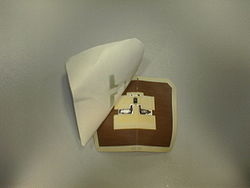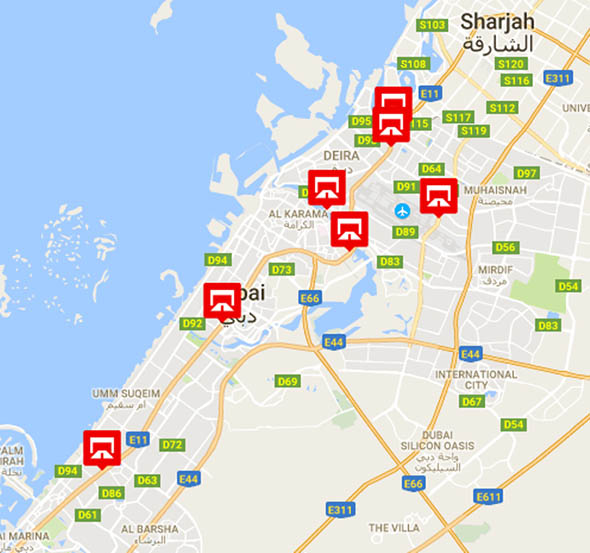Salik: Here's everything you need to know...
New to Dubai? Just bought your first car? Confused by all the toll gates? We’ve got you covered…
Ahh Salik. If you’ve travelled by car anywhere in Dubai over the last decade you’ve undoubtedly crossed one of the many Salik gates scattered around the city. They are equal parts the bain of every Dubai’s drivers existence and their joy, put in place to help reduce traffic on some of the city’s busiest roads.
Granted, the whole thing can be a bit confusing (particularly for those new to Dubai), so your friendly neighbourhood What’s On team is here to help explain what it is, how it works and anything else that you might need to know. Let’s get started, shall we…
Salik is Dubai’s automatic road toll collection system
The word also means “clear and moving” in Arabic, which seems apt.
Originally put in place in 2007, today the Salik system consists of seven toll gates set up around the city (more on that below). The Road and Transport Authority (RTA) designed the system to be free-flowing, meaning that as you travel between toll gates there’s no need to stop or get out of your car, nor do you need to manually pay at a toll both – everything is done automatically.
You do, of course, need to pay a fee. That fee is Dhs4 and is automatically deducted from your account every time you pass through a Salik toll gate.
It used to be that there was a maximum charge of Dhs24 per day per car but that is no longer the case. Since 2013 there is no limit on how much a vehicle can be charged for using Salik per day. Meaning, for example, if you go through eight gates in a single day, expect to be charged accordingly.
That sounds simple enough, but how does the system actually work?
Once you’ve signed up for Salik (again, more on that below) you’ll be issued with a Radio Frequency Identification (RFID) sticker tag that needs to be placed on the windshield of your car, approximately 1 cm below the rearview mirror.

Here’s a close-up of the inside of a Salik RFID tag
Each time you drive through a toll gate the Salik sensor will ping the sticker on your car and deduct the Dhs4 fee from your account.
The system is clever enough to work at normal highway speeds so there’s never any need to slow down or stop when going through the gates, you can keep on driving as normal.
Where are the toll gates located?

There are seven toll gates located around Dubai’s busiest roads, here’s how they break down in terms of location and fees:
Al Safa – Sheikh Zayed Road – Dhs4
Al Barsha – Sheikh Zayed Road – Dhs4
Al Garhoud Bridge – Sheikh Rashid Road – Dhs4
Al Maktoum Bridge – Umm Hurair Road – Dhs4 (except 10pm-6am Saturday to Thursday and 10pm-9am Friday when it is free)
Al Mamzar North & South – Al Ittihad Road – Dhs4 (if you pass between the north and south Al Mamzar toll gates within one hour you only get charged once)
Airport Tunnel – Beirut Street – Dhs4
Where do I sign up?
Firstly, you need to register for a prepaid Salik account via the official website and apply for an RFID sticker tag.
In order to register you’ll need some information handy, including your car’s plate number, the emirate it was registered in and the Traffic Code number which is located on the back of your valid UAE drivers license.
Registration costs Dhs100. This includes Dhs50 for your Salik tag and Dhs50 as prepaid credit towards your account. There is also a Dhs20 courier fee to have the Salik tag delivered to you.
The RTA have some useful instructions on installing the Salik tag to your car’s windshield – the most important part being that it must be approximately 1cm below the rearview mirror.
How do I top up my account if it’s getting low?
There are a number of ways to recharge your Salik account, with the easiest being to simply log on to the official website and follow the prompts there.
Other options include, downloading the Smart Salik app to your smartphone (which can also be used to check your balance), calling the 800-SALIK (72545) toll free number, buying a Salik top-up card from any Dubai petrol station, via the MPay app or any of the various smart kiosks located around the city.
The minimum recharge amount is Dhs50.
ALSO READ
*Salik: Driving down Sheikh Zayed Road just got more expensive*
*Good news: Al Maktoum Bridge is now Salik-free on Fridays*
What if I drive through a toll gate without a Salik tag?
While it’s not the end of the world, we certainly wouldn’t recommend doing it. Luckily, the RTA gives you a 10-day grace period from when you first pass through a toll gate to register for a Salik account before the fines start rolling in. And they are stiff…
That first tag-free trip will set you back Dh100 (if you exceed the 10-day grace period), with the second offense doubling to Dhs200 and every subsequent one coming in at a wallet-busting Dhs400, ouch.
If you pass through a toll gate with a depleted Salik account then you’re also liable to a Dhs50 fine, however you do get a five day window to top up your account.
In both cases there is a maximum of one violation per day, even if you travel through multiple gates. Salik fines can be paid online via the RTA website, the Dubai Police website, or the Abu Dhabi Police website if your vehicle is registered outside of Dubai.
What else do I need to know?
– You can have more than one vehicle connected to the same Salk account (but they’ll all need separate tags)
– You can set up your account to recharge automatically via your bank or Mpay
– Salik gates are not free during weekends or public holidays (with the exception of Al Maktoum Bridge mentioned above)
– Military, police, emergency services and school, college or RTA public buses are exempt from Salik
That should about cover it for the most crucial information, if you need any more info you can always visit the official Salik website.
– For more about Dubai straight to your newsfeed, follow us on Facebook.
Images: getty, wikipedia, RTA
